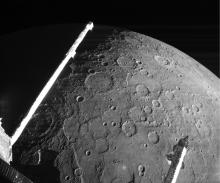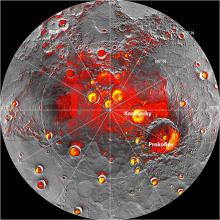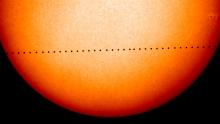Listen to today's episode of StarDate on the web the same day it airs in high-quality streaming audio without any extra ads or announcements. Choose a $8 one-month pass, or listen every day for a year for just $30.
You are here
Morning Mercury
Like a young child peeking over the edge of the kitchen table, the planet Mercury just peeks over the eastern horizon the next few mornings. It’s quite low in sky 30 or 40 minutes before sunrise, so you need a clear horizon to find it. But it looks like a bright star, so it should hold in view for a few minutes as the dawn twilight grows bolder.
Mercury is tougher to spot than the other four naked-eye planets because it’s closer to the Sun. In fact, it’s the closest of all the Sun’s planets. So from Earth, it’s never visible for more than a short time — either after sunset or before sunrise.
Mercury will stand farthest from the Sun for its current morning appearance on Saturday — about twice the width of your fist held at arm’s length. After that, it’ll start to drop back toward the Sun. It’ll pass behind the Sun — and into the evening sky — in about a month.
But as Mercury moves closer to the Sun, our viewing angle changes. As a result, Mercury will get a little brighter day by day for the next few weeks. On the 13th, for example, it’ll be twice as bright as it is tomorrow. That will make it a little easier to spot for a few days. But as it slides back toward the Sun, it’ll eventually drop so low that you won’t be able to find it at all.
So for now, enjoy elusive little Mercury as it peeks over the horizon and into view shortly before sunrise.
Tomorrow: naming some “jovial” moons.
Script by Damond Benningfield






